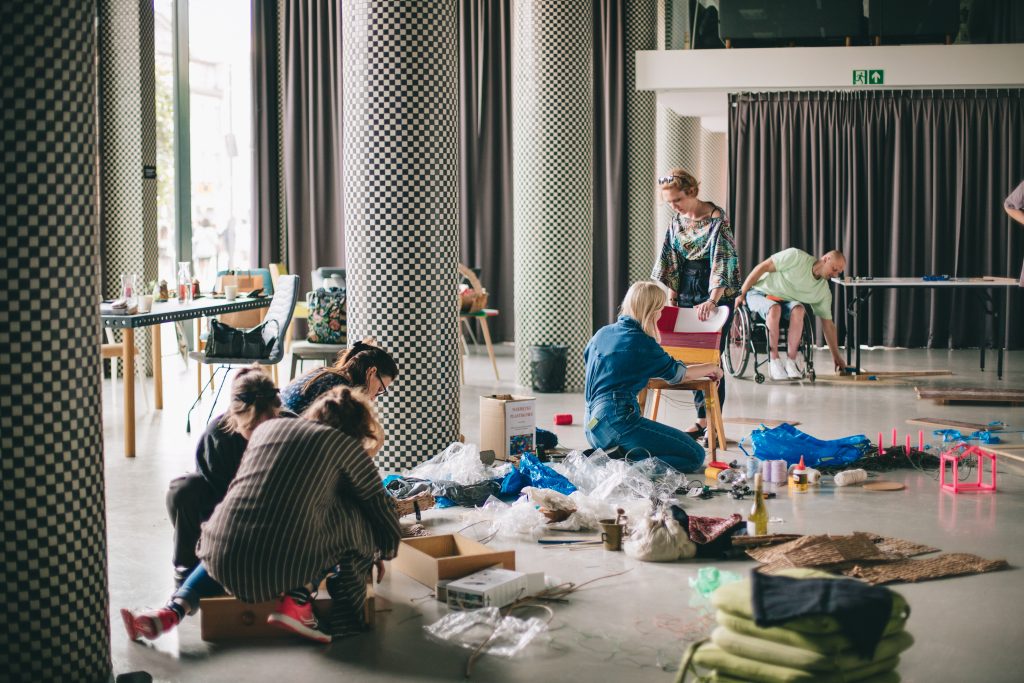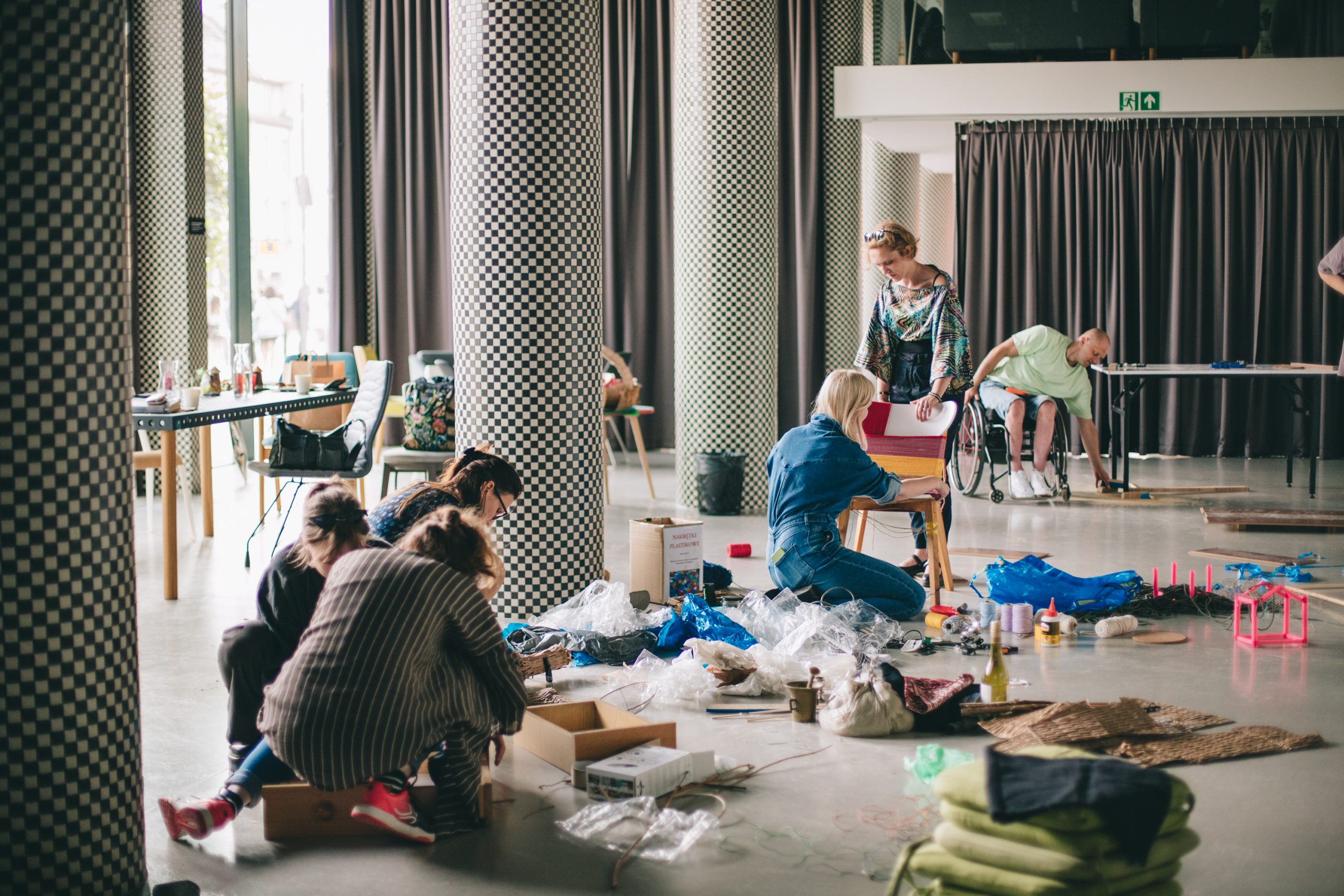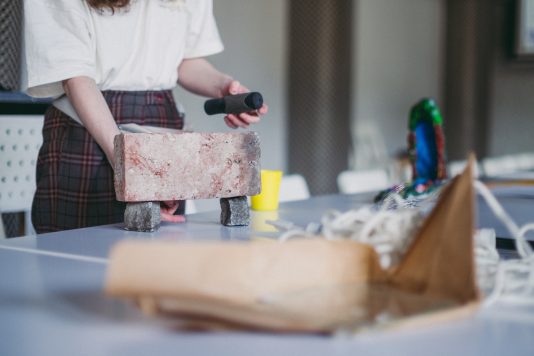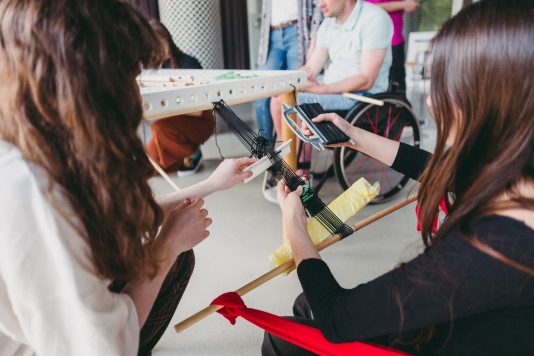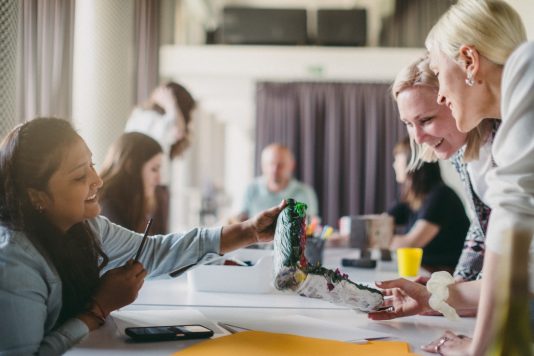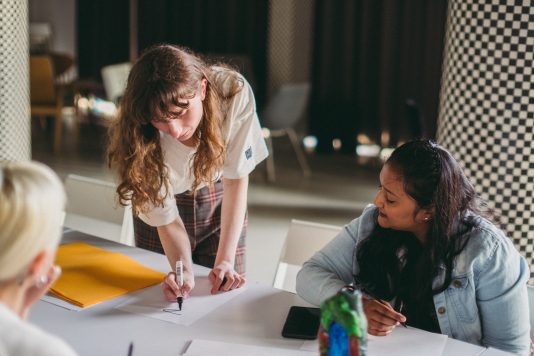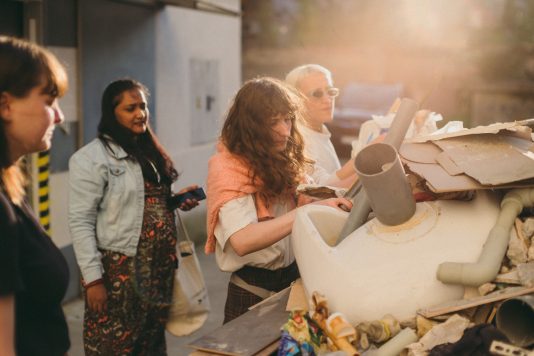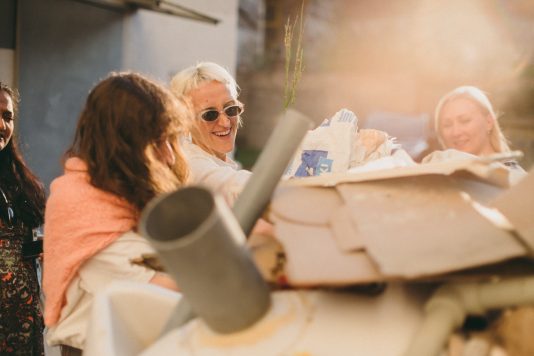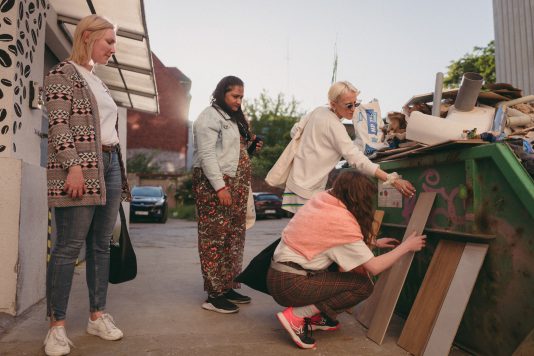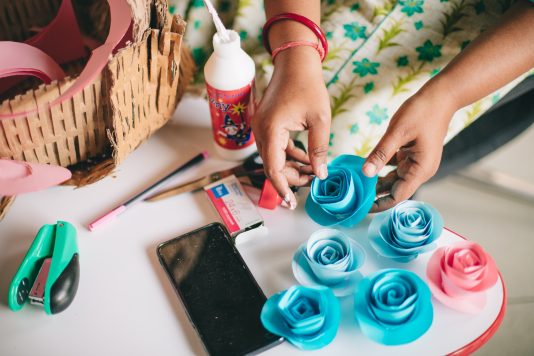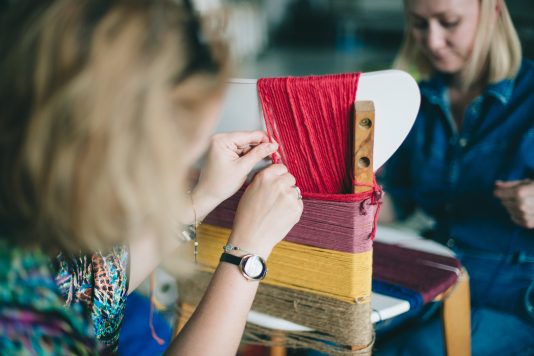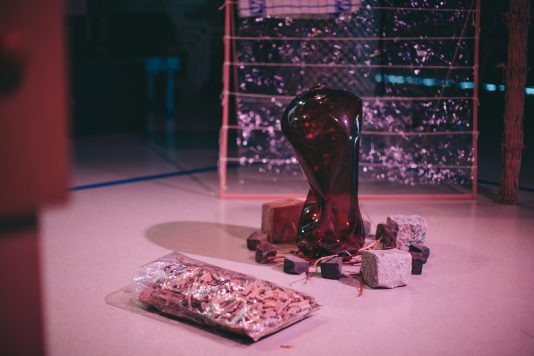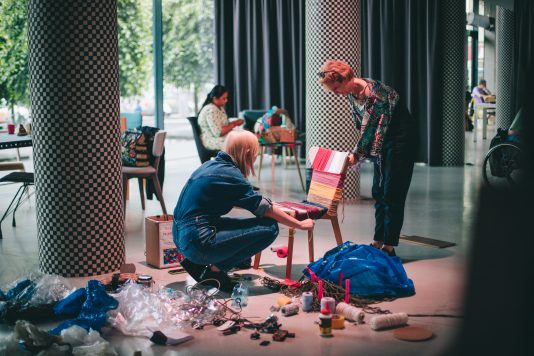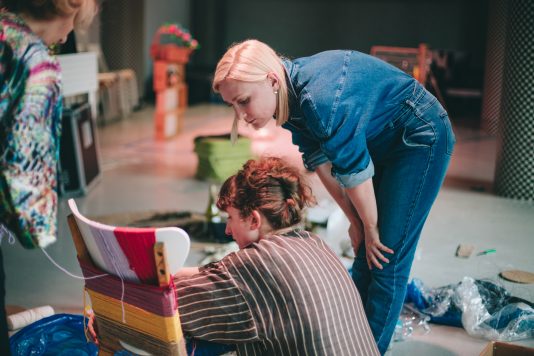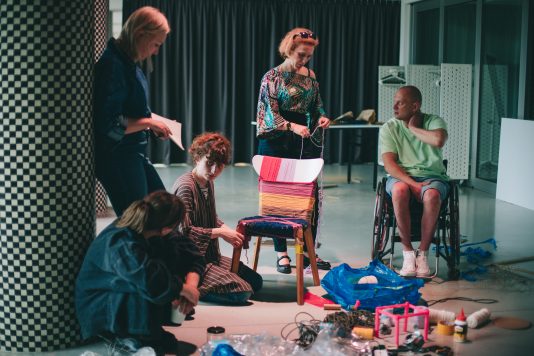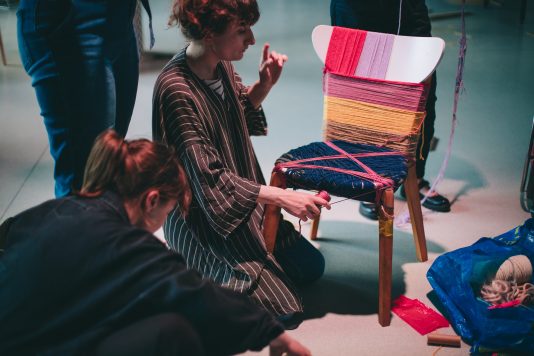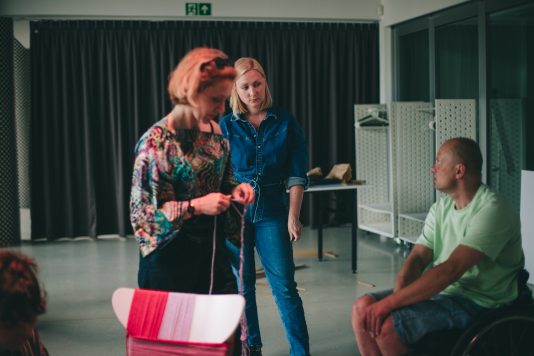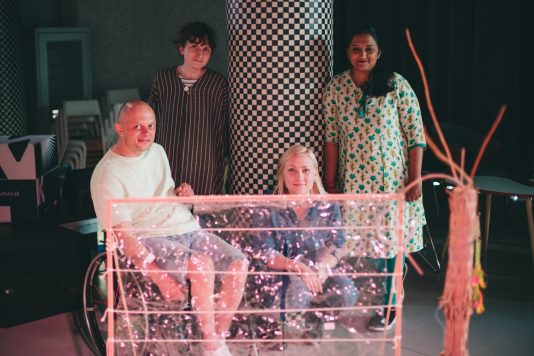Local stories, craftmanship and potencial enchanted in objects. About the Stanca Soare residency in Wrocław.
A month-long residency of the Romanian artist Stanca Soare in Wrocław is another example of the significance of travel for our artistic endeavors. During her stay in the new city, the artist had the opportunity to observe the daily operations of a cultural institution whose primary audience is the city’s residents. She also delved into archives and exhibits from days gone by. Thanks to this, she had the chance to learn about the history of local craftsmanship, which was largely influenced by the migration of people to Wrocław after 1945 (e.g., re-emigrants from Romanian Bukovina). She collaborated with the Ethnographic Museum and the local artist Olga Budzan in search of unique stories. As Wrocław Institute of Culture’s residencies focus on knowledge sharing, Stanca Soare also shared her artistic experiences through a series of creative meetings and an open presentation.
During her work in Barbara’s studio, tours, and field trips, the artist discussed various techniques for altering everyday objects. She was particularly interested in second-hand objects or items brought to the meetings by workshop participants. The theme of her exploration was “household industry,” a concept she had been exploring in her works for quite some time. During her stay in Wrocław, the Romanian artist frequently referred to her significant collaboration with the weaver Tanti Florica. Their collaboration was part of her deep individual research, which she initiated in 2021, focusing on weaving techniques rooted in Romanian society up until the mid-21st century.
DIY, demolition, or artistic creation? What happened during the workshops?
The workshops were attended by weavers of varying skill levels, DIY enthusiasts, and enthusiastic beginners looking to learn from one another and exchange ideas about household objects. These meetings aimed to create functional objects using a chosen technique, but it quickly became apparent that the group took great pleasure in collaboration and the meetings themselves, with the outcome becoming secondary. One of the participants, Ramalakshmi, a Wrocław resident from India, not only actively participated in the meetings but also continually brought new objects made from discovered elements. Among other creations, she crafted a cardboard basket adorned with handmade paper flowers. Ramalakshmi drew inspiration from a prototype Stanca had created a few days earlier. The artist fashioned the basket’s handle herself using a loom she devised in Wrocław, attaching a strip of fabric to the object.
Łukasz, another enthusiastic participant, set out to transform an old phone and a tangle of cables. Beginning with a complete deconstruction, he scrutinized the structure and textures of the electronics, focusing on repurposing objects that had fallen out of use. Several workshops later, it was revealed that his flatmate had fashioned a functional ashtray from a dismantled phone, which perfectly complemented a table constructed by Łukasz.
Activities outside the workshops
In addition to the meetings, the artist experienced the vibrant cultural life of Wrocław during this time of year. Like many resident artists we collaborate with, she visited the marketplace at Dworzec Świebodzki on a Sunday, albeit somewhat belatedly, encountering only a few sellers. It is worth noting that some collaborations posed challenges for the artist. She was unable to reach the founder of the Wrocław weaving gallery, Na Jatkach, for reasons unknown, as the gallery remained closed for the duration of the artist’s residency. The closest leads related to weaving took her to a small village in Lower Silesia – Chełmsko Śląskie, home to a complex of weavers’ houses constructed in the second half of the 18th century. Stanca discussed this place with Olga Budzan, the individual responsible for the complex and objects connected with Wrocław. Budzan possessed extensive knowledge of weaving and the ethnography of the region. The story of Cepelia, which existed until 1990, also piqued the artist’s interest. It was an organization that united cooperatives of folk and artistic handicrafts, operating commercial establishments for the sale of goods produced in the associated cooperatives throughout Poland. For the artist, the fact that some artists had never received compensation for the objects they submitted for sale raised critical questions about the economic circumstances of artists and the state of artistic handicrafts in general.
Furthermore, the artist paid special attention to an individual project involving a new subject and an object brought to Wrocław: a boar skull brought from Paris. She intended to transform it into functional objects, resulting in a series of items that still require some finishing touches. Perhaps she will complete them in France, in the privacy of her studio.
Collaboration with the Ethnographic Museum – how did it begin?
Less than three days before Stanca’s arrival in Wrocław, the Ethnographic Museum unveiled an inspiring exhibition, “You Won’t Forget. Memory, Memento, Memoir.” The exhibition featured objects from various eras associated with different social groups, carefully selected from museum and private collections for display. The exhibition comprised items found in our homes and presented to loved ones for various occasions. A visit to this exhibition, shared interests, and support from the institution’s director and Olga Budzan led to a workshop organized in the Ethnographic Museum’s courtyard. An enjoyable afternoon amid nature served as a perfect culmination of the series of meetings held in late May and early June.
For both the artist and the local community, Stanca Soare’s residency in Wrocław marked the beginning of a reflection on second-hand objects and the state of handicraft techniques in Poland. Conversations during the workshops inspired people to reconsider the role of functional objects and upcycling in the city.
The most active workshop participants: Łukasz Siemież and the second Łukasz (Łukasz’s flatmate), Martyna Horowska, Maja Bernaczek, Ramalakshmi Jeganathan, Lizzy, Magdalena Szymkow
Local support: Olga Budzan and Miruna Gheordunescu
Resident: Stanca Soare
Curator: Paulina Brelińska-Garsztka
Curatorial text by Paulina Brelińska-Garsztka
